10 brightest minds who changed the world we live in
27 July 2021
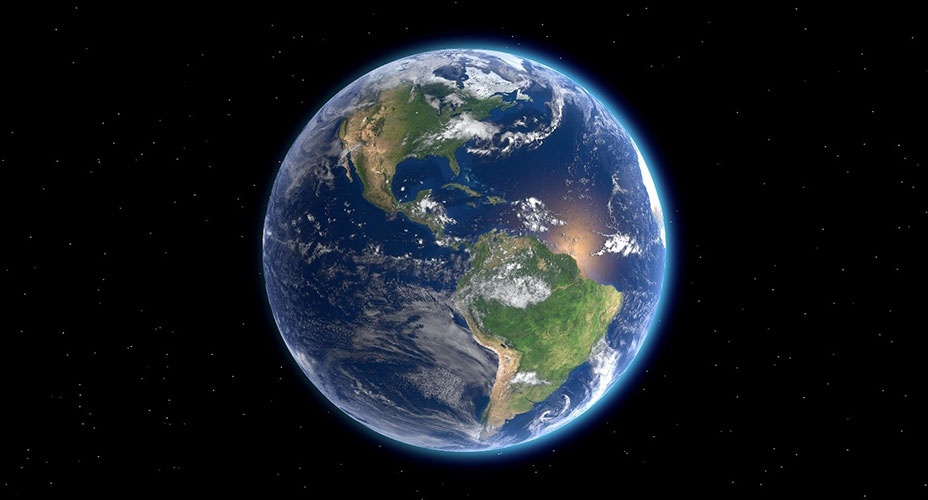
SHARE:
Throughout history the most creative and innovative people have had the power to change the world. This has been no less apparent than during the Covid-19 pandemic, when teams of brilliant scientists worked round the clock in a race against the virus. Thanks to the tireless efforts of a few, the first effective vaccines were developed in record time - less than 1 year from start to finish. It’s a phenomenal scientific achievement and one that started us thinking about some of the brightest minds who helped change the course of human history.
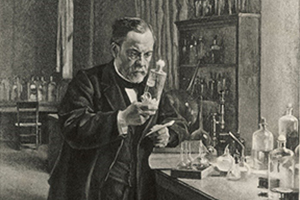
1. Louis Pasteur develops the first vaccine
Hopes of beating Covid-19 rest on our global vaccination programme but the idea behind a vaccine - that infecting the body with a disease is the means of curing it - is not new. The process was first attempted in 1796, when Edward Jenner’s inoculation experiments found a treatment for smallpox. Half a century later however, Louis Pasteur built on Jenner’s theory to create the first vaccines (for fowl cholera, anthrax and rabies). Dubbed the Father of Modern Medicine, Pasteur’s work remains vital to combatting infectious disease.
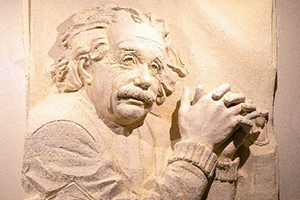
2. Albert Einstein proposes the general theory of relativity
When Einstein put forward his general theory of relativity, it changed everything. His equation explained the rules of the universe and transformed our understanding of time and space. That’s all well and good you might think but how does it impact everyday life? Well for one thing, we’d be lost without Einstein as his research enabled the development of GPS, which is essential to the accuracy of satnavs, Google maps and alarm clocks. Einstein’s ideas also led to the creation of lasers, which have come to occupy practically every niche imaginable.
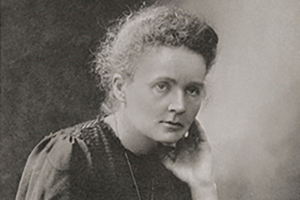
3. Marie Curie makes a breakthrough in radioactivity
Marie Curie was a physicist, chemist, inventor and philanthropist as well as the first woman to be awarded a Nobel Prize. Her greatest contribution however was her research into radioactivity; a field so new that she coined the name herself. Her breakthrough understanding of radiation - including her discovery of two new elements – opened the door to radiation therapy, understanding the structure of the atom and the use of nuclear energy. Her work remains untouchable and some of her books are still so radioactive they must be stored in lead lined boxes.
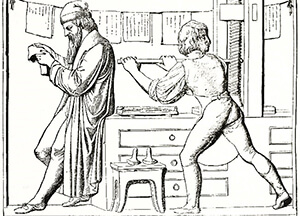
4. Johannes Gutenberg invents the printing press
In the 15th century, Johannes Gutenberg was working on an innovation that would allow people to disseminate knowledge further than ever before. More precisely he developed a method of metal type that could be mass-produced and used to print out hundreds of copies of a book in a matter of days. By the 1490s, lower production costs meant the printing press was suddenly capable of vastly accelerating the dissemination of knowledge. It became the engine of the Renaissance and the course of human history was forever altered.
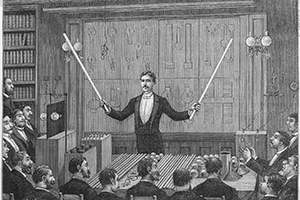
5. Nikola Tesla experiments with electricity
It’s easy to take electricity for granted. At the flick of a switch we can access heat and light, power transportation and communication, and entertain ourselves for hours on end with technological devices. Electricity hasn’t always been at our fingertips however - for that we must thank Nikola Tesla and his ground-breaking work producing the first motor that ran on AC current. This type of current was a game changer as it meant power could now be carried over great distances. Tesla was always one-step ahead of his contemporaries and had many other brilliant ideas besides that shaped the modern age.
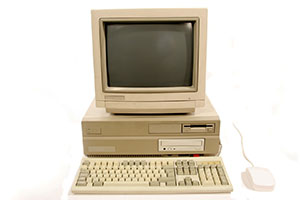
6. Tim Berners-Lee invents the World Wide Web
When Tim Berners-Lee created the World Wide Web in 1989, he was looking to revolutionise the way scientists share data. At the time, scientists had to physically go to different computers to access information. Consequently, Berners-Lee devised 3 technologies that are quite familiar today and which enabled computers to understand one another: HTML, URL and HTTP. By the end of the year he had created the first webpage on the internet and by 1991 he made the code freely available to anyone in the world. This was the start of the World Wide Web and the world has never been the same since.

7. Steve Jobs launches the iPhone
‘An iPod, a phone, and an Internet communicator,’ Steve Jobs famously said when unveiling the first iPhone in 2007. ‘Are you getting it? These are not three separate devices. This is one device.’ With the iPhone, Steve Jobs changed the world. In just over a decade he transformed the way people communicate, interact, entertain and even changed the way we think. Two concepts were pivotal to its success and foundational to the entire smart phone industry: the touch screen and the App Store. These features have given smart phones the power to create and destroy entire industries.
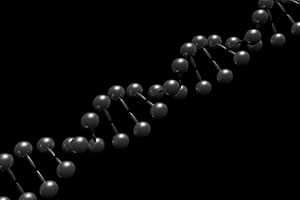
8. Watson and Crick reveal the structure of DNA
In 1953, Watson and Crick walked into a bar in Cambridge and announced they’d ‘found the secret of life.’ The truth wasn’t far off. The paper Watson and Crick published revealed the chemical structure of DNA, the twisted ladder of the double helix, and with it they unlocked the genetic blueprint that determines how every person is made. This discovery has since led to numerous breakthroughs in our understanding of how life and diseases work. It also paved the way for scientific advancements like pre-natal screening for genetic diseases, genetically engineered foods; and the ability to test evidence to convict or acquit criminals.
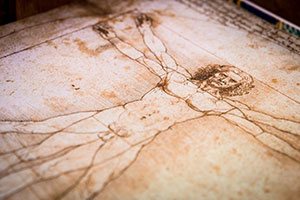
9. Leonardo Da Vinci imagines the future
There are many ways to describe Leonardo Da Vinci: scientist, mathematician, artist, engineer, architect and inventor. While his most famous work is undoubtedly the Mona Lisa, Da Vinci was more than just an exceptional painter. He was the embodiment of the Renaissance; a man whose curiosity was matched by his intelligence and skill. Many of Da Vinci’s contributions were leaps and bounds ahead of his time, including his plans for machines, bridges, parachutes and even a helicopter, while his sketches of human anatomy revolutionised the way we understand the human body.

10. Carl Djerassi invents the birth control pill
Carl Djerassi had an illustrious career in both science and the arts. Although his greatest contribution to humanity was the invention of the birth control pill. This medical breakthrough created one of the most profound changes in human history. From this moment, women could liberate themselves sexually and socially and move towards a more equal footing with men. The shockwaves were immense in the immediate aftermath and there has been pushback ever since. Nevertheless, in today’s world we operate on the premise that every girl can grow up to be anything she wants and the Pill remains a symbol of that freedom.